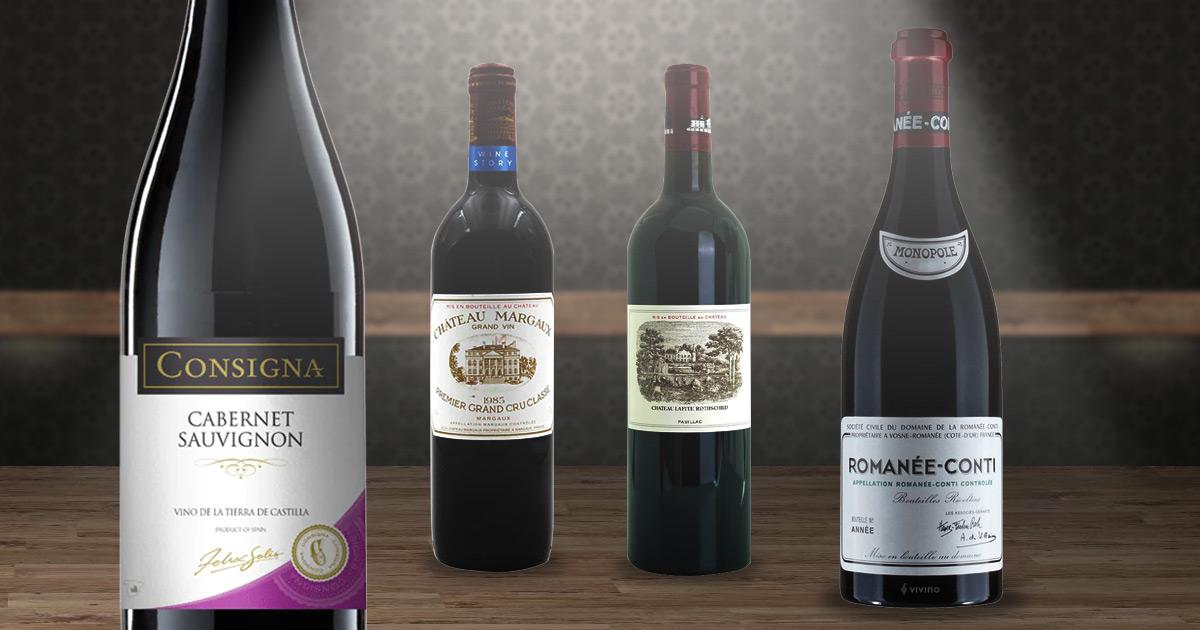What Are Investment Grade Wines & Is It Worth It To Invest?

Investing wisely is the key to making your money work for you, and while traditional assets like stocks and real estate have their place, there’s an alternative investment option that has been gaining traction – investment-grade wines. The wine market’s historical allure and cultural mystique might seem intimidating, but delving into the world of fine wines as an investment can offer exceptional returns and a host of benefits. In this comprehensive guide, we will explore what investment-grade wines are, how to invest in them, the best wines for investment, and why investing in wines is a worthwhile endeavor.
What is Wine Investing?
Investing in wine involves purchasing and holding fine wines to achieve capital appreciation over time. Investment-grade wines stand out due to their capacity to mature, their worth in the secondary market, and the producers’ extensive history of excellence. These wines are typically sourced from renowned regions such as Bordeaux and Burgundy in France, as well as vintage champagnes and other collectibles like Napa Valley Cabernet Sauvignon and Super Tuscans from Italy.
How to Invest in Wine?
Investing in wine has become increasingly accessible and streamlined, offering various avenues for investors to enter the market and build a diverse portfolio of investment-grade wines. Here are some ways to get started in buying wines for investment:
1. Wine Exchanges
Wine exchanges act as marketplaces that bring buyers and sellers together to facilitate wine trading. Platforms like Vinovest Exchange, Cavex Exchange, Liv-ex, and LiveTrade by Bordeaux Index allow investors to browse and trade a wide selection of investment-grade wines. These platforms offer clear and open pricing, along with valuable market intelligence, empowering investors to make well-informed choices.
2. Wine Auctions
Auction houses of high repute offer a marketplace for purchasing and selling investment-grade wines through wine auctions. Auction houses like Sotheby’s, Christie’s, Zachys, Acker Merrall & Condit, and others hold live and online auctions, featuring a vast array of rare and collectible wines. Participating in auctions allows investors to access sought-after bottles and potentially discover new investment opportunities.
3. Wine Investment Funds
Wine investment funds pool the capital of multiple investors to acquire a diversified portfolio of fine wines. These funds are managed by professional wine investment experts who select wines based on market trends, historical performance, and potential for appreciation. Investing in a wine fund can provide a more hands-off approach to wine investment for those who prefer not to manage individual bottles.
4. Wine Merchants and Retailers
Many established wine merchants and retailers offer access to investment-grade wines. These experts can offer customized suggestions tailored to an investor’s tastes and investment objectives. Establishing a rapport with a reliable wine vendor can be beneficial, especially for those who prefer being actively involved in choosing and buying wines.
5. Wine Clubs and Collectives
Some wine clubs and collectives focus on fine wine investments, allowing members to pool their resources to acquire cases or bottles of investment-grade wines. These collectives often offer educational resources and networking opportunities for wine enthusiasts interested in building a wine investment portfolio.
6. Wine Stocks
For investors more comfortable with traditional financial assets, some wine-related companies are publicly traded. Investing in wine stocks can provide exposure to the wine industry without the need to physically own and store bottles. Companies involved in wine production, distribution, and retailing may offer investment opportunities in the stock market.
What Are the Best Wines to Invest In?
Investment-grade wines are distinguished by their scarcity, demand, and ability to age gracefully. Areas such as Bordeaux and Burgundy are famous for crafting some of the most sought-after and valuable wines. Bordeaux’s First Growth chateaus, including Chateau Lafite Rothschild and Chateau Margaux, consistently perform well in the secondary market. Burgundy wines, particularly from Domaine de la Romanée Conti and Leroy, have been surging in popularity and value in recent years.
Champagne, especially from superior vintages like 2002 and 2008, has emerged as a leading investment-grade wine due to its consistently strong performance and recent price increases resulting from a reduced supply in the market. Additionally, the US Napa Valley Cabernet Sauvignon and lesser-known Italian wine regions like Abruzzo, Puglia, Campania, and Umbria have shown significant potential for investment.
Can Investment Wines Make Your Money Grow?
Investment-grade wines have proven to be a high-performing asset over the last few decades, with an impressive compound annual growth rate (CAGR) of 12.6% since 1988. Even during economic downturns and the Covid-19 pandemic, fine wine indices registered double-digit increases, outperforming mainstream equities. Over a decade, the Liv-ex Fine Wine 100 Index, monitoring the 100 most actively traded wines worldwide, has demonstrated superior returns compared to major stock indices such as FTSE and S&P 500, with lower volatility than gold.
Vintage quality, provenance, and aging potential are the fundamental factors determining the value of investment-grade wines. This stable and low-risk investment also offers a tangible asset with limited supply and rising global demand, ensuring steady price appreciation over time. Scarcity can drive prices higher, and wines from iconic vineyards with limited production, such as Domaine de la Romanée Conti, can command astronomical prices in the secondary market.
Why Invest in Wines?
There are various reasons why it’s a good idea to invest in wine. Below are some of them:
- Portfolio Diversification – Fine wine’s low correlation with mainstream markets makes it an ideal portfolio diversifier. When traditional markets experience volatility, investment-grade wines tend to maintain stability, mitigating overall portfolio risk.
- Inflation Resistance – Fine wines have proven to be effective hedges against inflation and economic uncertainties. Their limited supply and increasing demand allow their value to appreciate during inflationary periods.
- Tangibility – Unlike digital assets, fine wine provides a tangible, physical presence, creating a sense of ownership and connection for investors.
- Tax Efficiency – Fine wine is considered a ‘wasting’ asset, exempting it from Capital Gains Tax upon sale. This tax efficiency enables investors to enjoy more significant returns.
- Passion Investment – Beyond financial gains, investing in fine wine can be a passion for many, combining the joy of wine appreciation with profitable returns.
Wines For Investment Are Good Ways To Make Money Grow
In conclusion, investment-grade wines present a unique and intriguing investment option for those looking to diversify their portfolio and potentially achieve attractive returns. With the global wine market encompassing less than 0.1% of the overall wine industry, investing in wines can provide an excellent source of diversification. While wine investing may involve a steep learning curve and careful consideration of costs, it offers the possibility of being a rewarding and enjoyable endeavor.
Like any investment, it’s essential to conduct thorough research, understand the factors that influence wine prices, and consider the time horizon before venturing into wine investing. Ultimately, for those with a passion for wine and a keen eye for market trends, investment-grade wines can be a compelling addition to a well-rounded investment strategy, providing the opportunity to make your money grow while savoring the finer things in life.

